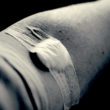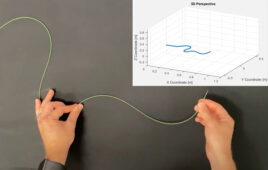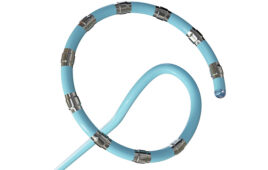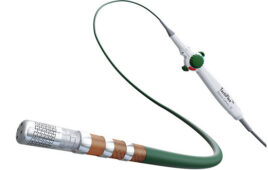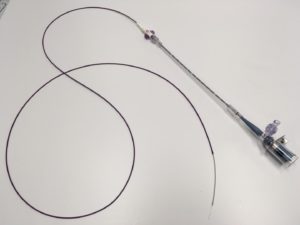
[Image from Marcu Lab/UC Davis]
The device uses intravascular ultrasound and fluorescence lifetime imaging (FLIm) to retrieve structural and biochemical information about plaque in the arteries to help predict heart attacks more reliably, according to the researchers.
Currently, doctors use angioplasty to view blood vessels in constricted regions. A contrasting agent has to be injected to be able to view the vessels in an X-ray, but sometimes an angioplasty could miss dangerous plaque buildup because plaque doesn’t always cause constricted vessels. Intravascular ultrasound is able to see through the plaque buildup to determine the depth of vessels to help prevent heart attacks.
Heart attacks occur when blood flow bringing oxygen to the heart is drastically reduced or cut off completely, according to the American Heart Association. Blood flow is generally reduced because the arteries that carry blood narrow from plaque build up. If the plaque breaks in the artery, it could cause a blood clot which can block blood flow through the heart. About every 40 seconds, someone in the U.S. will suffer a heart attack.
Laura Marcu and her team of researchers designed the device with an optical fiber inside the catheter to send short laser pulses into tissues. The laser pulses cause surrounding tissue to fluoresce with small flashes of light. Each type of tissue emits different amounts of fluorescence. Simultaneously, an ultrasound probe within the catheter is able to record structural information about the vessels.
The catheter is flexible enough that it can access coronary arteries in humans during standard procedures and does not need injected fluorescent tracers or special modifications of the catheterization procedure.
So far, the catheter has been tested in living pig hearts and human coronary artery samples.
The researchers suggest that the technique could improve the understanding of how plaque ruptures to cause blood clots, as well as helping treat patients who have heart disease.
Marcu and her team are currently working on getting FDA approval to test the intravascular technology in human patients.
The research was published in the journal Scientific Reports.
(See the best minds in medtech live at DeviceTalks West, Dec. 11–12 in Orange County, Calif.)

